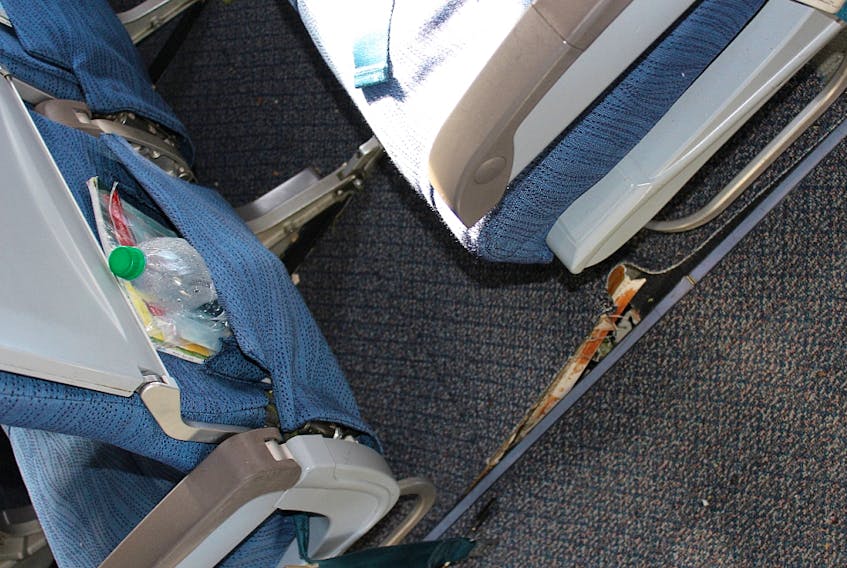
If you travel by air any amount, you’ve heard it before: the safety demonstration that, eventually, you can almost repeat by rote.
“Insert the flat metal end into the buckle and pull on the loose strap to tighten … If there is a sudden change in cabin pressure …”
You know the drill.
Except, strangely, many people don’t.
Last week, a WestJet aircraft caught fire at Toronto’s Pearson Airport after an empty SunWing jet, being towed, crashed into it.
Cellphone video of the tumult on the WestJet aircraft captured the flames and the raised voices. No one was injured and the aircraft was safely evacuated.
But things didn’t go as smoothly as the emergency procedures card that’s tucked into your seat-pocket would have it, and people faced critical delays in getting off the aircraft.
The cause?
Sheer stupidity.
Passenger Ali Alagheband, travelling with his wife and son, told CBC News that the evacuation of the aircraft was slowed by some passengers who insisted on not leaving the plane without their carry-on bags.
“I was yelling at people reaching overhead to get their bags. It was ridiculous,” he said. “I was literally yelling, ‘Get the F off the plane.’”
Seriously?
It’s an issue that you can be sure the federal Transportation Safety Board (TSB) is going to have a good hard look at.
Why?
Because an air crash in Atlantic Canada shows such behaviour is hardly an isolated event.
When an Air Canada Airbus crashed at the Halifax airport in March 2015, the TSB made special mention of people’s fondness for their carry-on items.
Related story:
UPDATED: Air Canada flight crash lands at Halifax airport, no major injuries reported
“In this occurrence, some passengers exited the aircraft with their carry-on baggage, although they were advised not to by the cabin crew during the pre-departure passenger safety briefing and after the aircraft had come to a stop. The safety-features card also depicts that carry-on baggage is not to be taken when evacuating during an emergency.”
Parts of the plane were torn off. The plane slid on its belly. Metal support beams were driven up through the aircraft’s floor by the force of the crash.
It is also, sadly, a regular occurrence at accidents: “The TSB has investigated a number of accidents in which passengers retrieved their carry-on baggage during an evacuation. In 2007, following its investigation into the August 2005 overrun occurrence at Toronto Lester B. Pearson International Airport, Ontario, the TSB found that, during the emergency evacuation of the aircraft, many passengers took their carry-on baggage with them, despite specific instructions to the contrary being repeatedly shouted to them by the flight attendants.”
You might remember that air crash: a spectacular fire that completely destroyed the plane after an Air France jet overshot the runway. Heavy smoke was already coming into the cabin through two doors and passengers were still trying to get at their carry-on luggage.
The Halifax investigation said research found that “passengers insisting on retrieving their carry-on baggage during an emergency evacuation was not unique to this accident, but was rather widespread.”
Think about this when you look at the person in the seat next to you. The TSB says, “Research has shown that passengers typically pay little attention to the pre-departure briefings and to the safety-features cards.”
The TSB says the risks are clear: “If passengers retrieve or attempt to retrieve their carry-on baggage during an evacuation, they are putting themselves and other passengers at a greater risk of injury or death.”
In the unlikely event you are in an air crash, leave your stuff behind.
Because emergency evacuations aren’t supposed to be leisurely jaunts up the aisle, computer bag in one hand, jacket over your arm and roller-suitcase trailing behind you.
Someone else’s stuff could be the death of you. Literally.
Russell Wangersky’s column appears in 39 SaltWire newspapers and websites in Atlantic Canada. He can be reached at [email protected] — Twitter: @wangersky.








